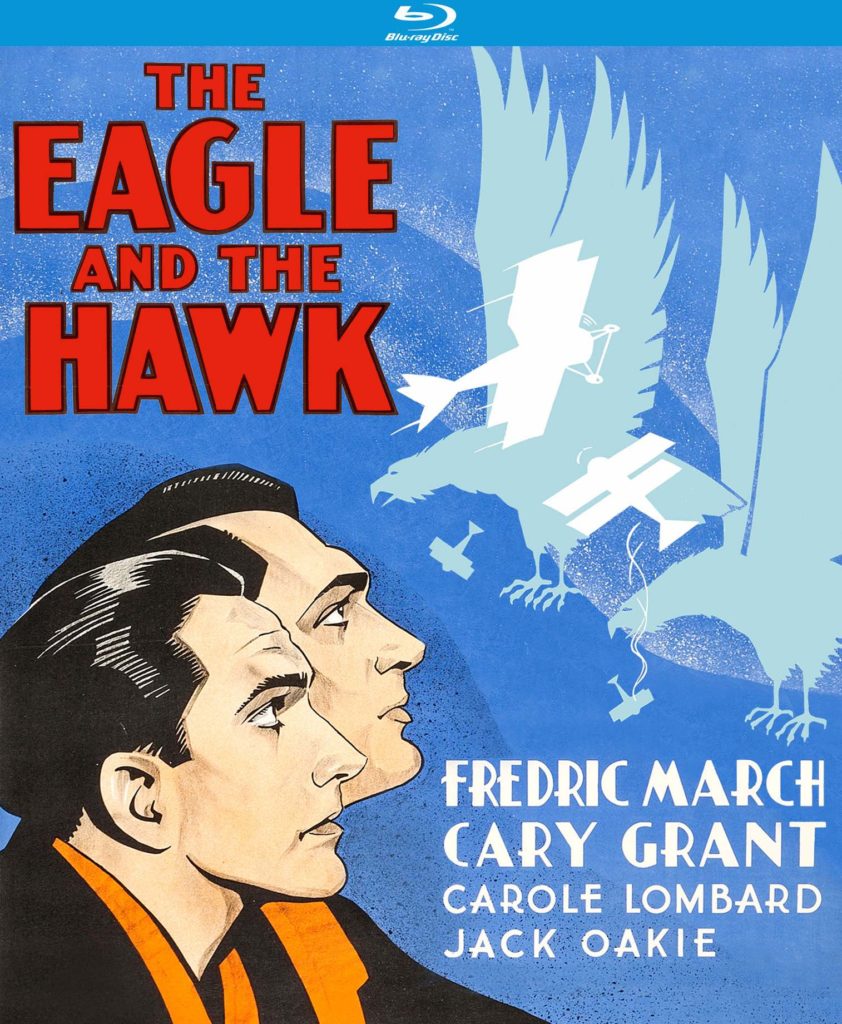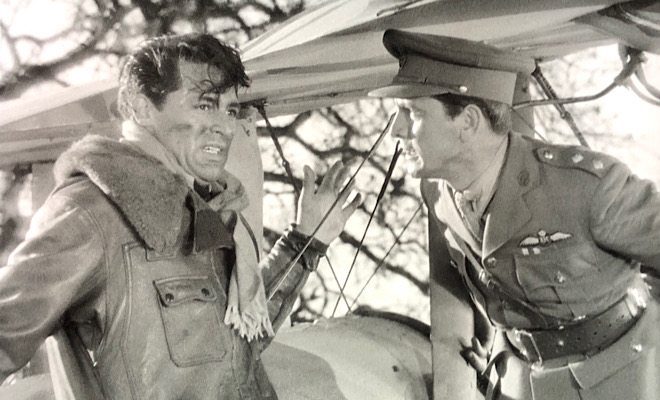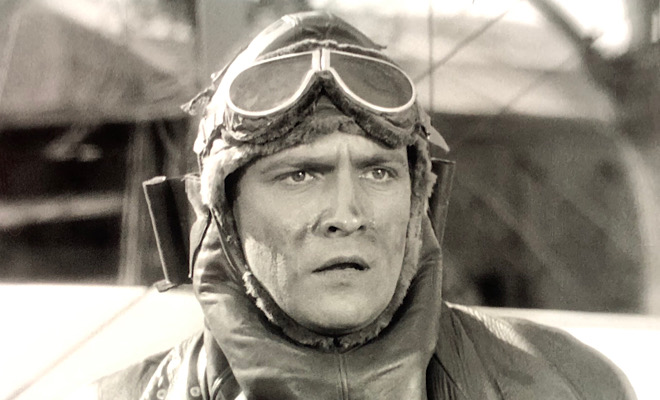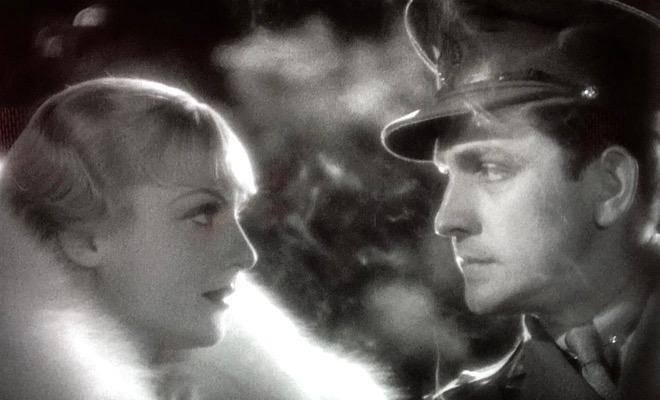Fredric March and Cary Grant Butt Heads in World War I Flying Ace Drama
DIRECTED BY STUART WALKER / 1933
BLU-RAY STREET DATE 8/18/2020
KINO LORBER STUDIO CLASSICS

The Eagle and the Hawk is a pre-code Hollywood drama starring Fredric March and Cary Grant as two American members of the Royal Flying Fighter Corps in World War I. March plays Lt. Jerry Young, an ace pilot from a wealthy background who’s picked out early in the picture to head to France and fly against the Germans. Grant is Lt. Henry Crocker, a working man with a hot temper. He’s an observer and gunner, but dreams of being a pilot himself one day. His impulsiveness tends to get in his way, however, and his dream seems like it will forever go unfulfilled.
For Grant, who would become famous playing charming, urbane types, this would seem like casting against type. Grant’s star was still on the rise at this point in his career (he made his feature film debut just the year before in This is the Night) and Paramount, the studio he was contracted to, hadn’t quite found a niche for him yet. Here he plays a guy with such a hair trigger that he slugs two people within the movie’s first five minutes- one of which was during the opening credits!
March, on the other hand, plays a man conflicted and plagued by demons. He is, of course, best known for his dual role in Dr. Jekyll and Mr. Hyde, for which he won the Academy Award (a rarity for a horror film!). His character here, Young, is lauded and decorated for his heroic flying, and yet he feels that his success is built on death upon death.

Accompanying Young to France is another member of his squadron, Lt. Mike Richards. Richards is played as convivial comic relief by Jack Oakie (he played the ersatz Mussolini in Chaplin’s The Great Dictator). Oakie’s performance here is quite noteworthy, in that he’s comic relief that’s actually funny. It’s underplayed, which also helps balance his antics against the heavy drama that drives the plot.
Young quickly becomes an ace pilot, racking up kills. He becomes a role model for the young pilots who join his squadron. The men raise their glasses in toast in his honor. Yet he can’t help but see the faces of the men who died flying with him. One man is seen writing home to his family, and promises them that he’ll finish the letter after he gets back from his mission- a sure death sentence in a war movie if ever there was one!
Likewise when the new recruits arrive, all eager to meet the heroic Young. These kids are so fresh-faced and innocent looking, they might as well have huge targets painted on their heads. The big surprise is just how efficiently they get disposed of.

The casualties are piling up faster than they can be replaced, so despite his attitude, Crocker is sent to France to fly with Young. The two men cannot stand each other. Young still holds onto some semblance of nobility, while Crocker is more of a hardened realist. When Crocker attempts to shoot a German pilot who’s parachuting from his damaged plane, Young prevents him and the two come to blows after they get back to their base. “You don’t just shoot men in the back!” Young shouts, but Crocker knows that a man spared is a man they’ll just have to fight again.
To real cinema buffs, the dogfighting footage might look awfully familiar. Clips were taken from other Paramount pictures like Wings and Young Eagles among others. I don’t mean that as a knock against The Eagle and the Hawk, but it was clear the sequences came from elsewhere.
The stress of continuous combat, and the demands of being held up as a war hero start to take their toll on Young, and he descends into alcoholism and despair. Worried about his mental state, his commander gives him leave to go back to England, where he encounters a young woman at a party. She’s not given a name, and is played by Carole Lombard. This woman is the only one who’s willing to listen to Young as he unburdens his soul to her. It’s a palliative experience for him, that unfortunately lasts only as long as his return to France.

The Eagle and the Hawk gives us a pretty stark (if somewhat melodramatic) look at how the horrors of war can slowly grind a man down. There’s a nightmare sequence in the middle of the film that’s shot with an extreme closeup of March’s face, and it drives home the terrors that continuously haunt him as they haunt so many men and women who have served. They called it ‘Shell Shock’ back in the Great War, but we understand it as PTSD today.
Kino Lorber’s Blu-Ray release of The Eagle and the Hawk comes with a feature-length audio commentary by Lee Gamblin. It also has the usual collection of theatrical trailers.


